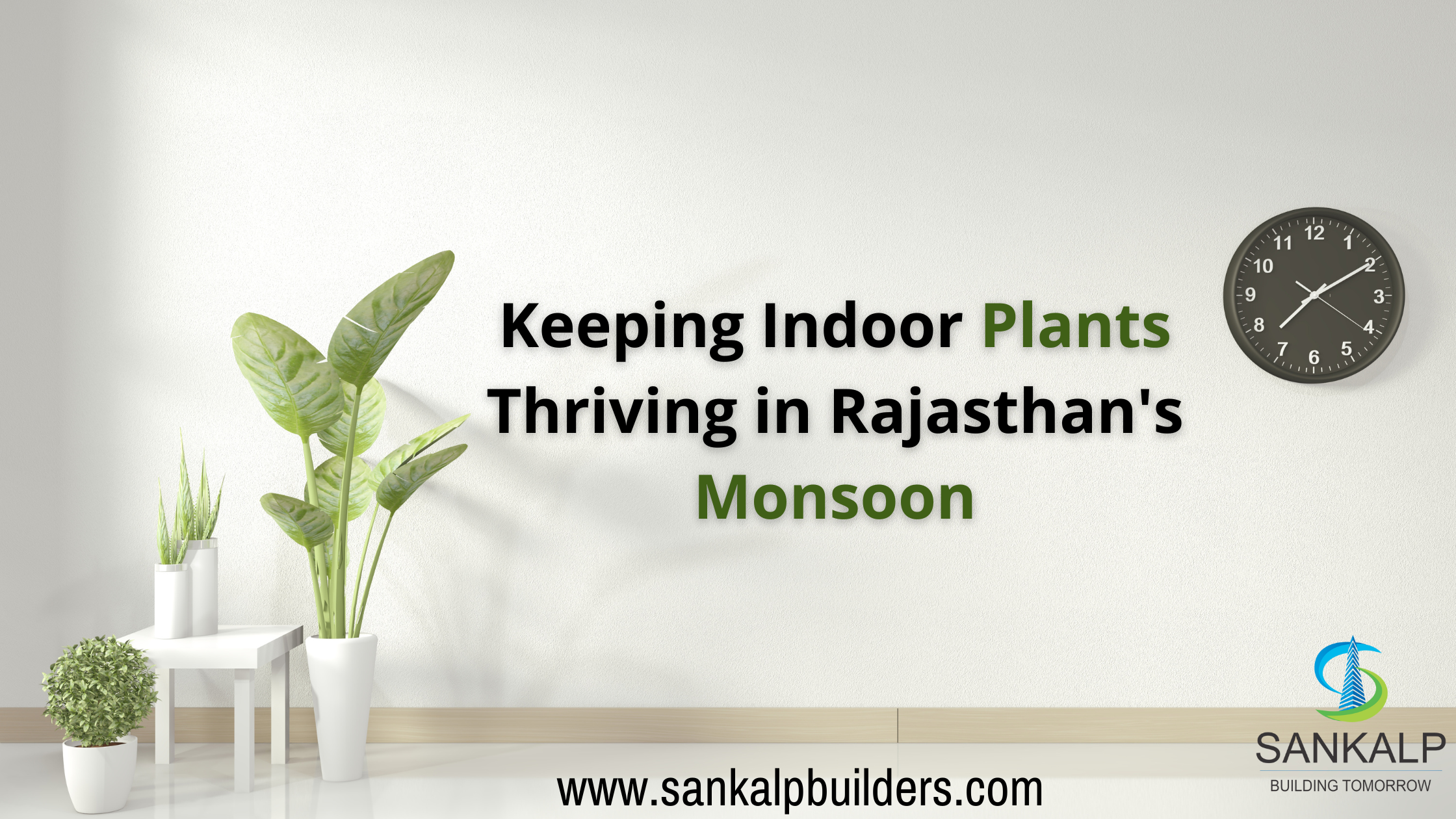Monsoon in Rajasthan is a welcome relief from the scorching heat, but it can present unique challenges for indoor plants. Excessive humidity, reduced sunlight, and increased chances of fungal infections can affect the health of your green companions. To ensure your indoor plants thrive during the rainy season, here are some essential care tips tailored to Rajasthan’s monsoon.
1. Control Humidity Levels
Rajasthan’s monsoon brings a significant rise in humidity, which can cause your indoor plants to become overwatered and prone to fungal diseases. Use a dehumidifier or keep windows open for better air circulation. You can also place moisture-absorbing materials like activated charcoal or silica gel near your plants to help maintain the right humidity levels.
2. Adjust Watering Routine
During the monsoon, the moisture levels in the soil stay high for longer periods. Reduce your watering frequency to prevent waterlogging and root rot. Always check the soil’s moisture level before watering—if it feels damp, wait a few days before checking again. Opt for well-draining pots to allow excess water to escape easily.
3. Ensure Proper Drainage
Waterlogged soil can be detrimental to your plants, especially during the rainy season. Ensure that your pots have adequate drainage holes. You can also elevate pots slightly using bricks or pot stands to prevent water from accumulating at the base. For large pots, adding a layer of gravel at the bottom can improve drainage.
4. Monitor for Pests and Diseases
The humid environment during monsoon is a breeding ground for pests like aphids, spider mites, and fungus gnats. Regularly inspect your plants for signs of infestation, such as yellowing leaves, webs, or tiny insects. If you spot any, use organic insecticides like neem oil or prepare soap and water solution to spray on affected areas.
5. Maximize Light Exposure
Cloudy skies during the monsoon season can reduce the amount of sunlight your indoor plants receive. Move your plants closer to windows or use artificial grow lights to ensure they get enough light. Cleaning the leaves regularly will also help in maximizing light absorption.
6. Use a Fungicide
Fungal infections are common in high-humidity conditions. To protect your plants, spray them with a mild fungicide at the start of the monsoon season. Ensure the fungicide is suitable for the specific types of plants you have, and follow the recommended usage instructions.
7. Avoid Fertilizing
During Rajasthan’s monsoon, plant growth tends to slow down, and their nutrient needs decrease. Avoid fertilizing your indoor plants during this period as it may lead to nutrient build-up in the soil, which can harm the roots. Resume fertilization once the monsoon is over and normal growth resumes.
If you are searching for finest apartments with perfect ventilation where you can enjoy your life in all seasons, then Check out Sankalp Group’s flagship project The Index . Offering 3/4/7 BHK Ultra luxury apartments in Jagatpura.
Conclusion
Caring for indoor plants during Rajasthan’s monsoon requires some adjustments to your regular routine. By controlling humidity, adjusting watering habits, ensuring proper drainage, monitoring for pests, maximizing light exposure, using fungicides, and holding off on fertilizing, you can keep your indoor garden lush and healthy throughout the rainy season.
Like this post? We share interesting articles, interior ideas and real estate news twice a month. Do care to follow us on Face Book, Instagram, LinkedIn and Subscribe to our YouTube Channel.










